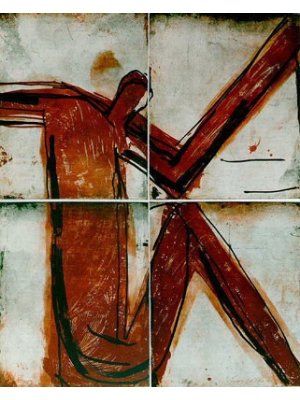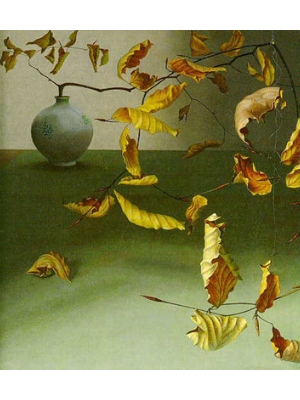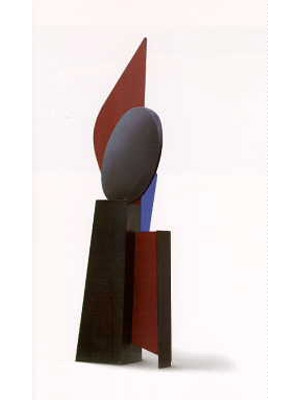The distinguished Australian artist Ellis Rowan was born in Victoria, and later travelled extensively studying and painting birds and wildflowers throughout the world. Her prolific output was mainly confined to watercolours, ranging from the large, boldly coloured and carefully-detailed flower studies through to small, more intimate garden scenes and bird studies.
The charming watercolour of Government House, Melbourne, with recent plantings of the Botanical Gardens, is a fine example of the artist's ability to accurately observe and depict her environment's strangeness and beauty. This unique work is unusual for its depiction of a Victorian landmark.
Image 4
David Denby
Leaves 1996
Oil on linen laid over board
24.2 x 24.2 cm
Deakin University Art Collection
David Denby trained at St. Albans School of Art and Walthamstow School of Art, prior to completing a postgraduate degree at the Royal Academy between 1968 and 1971. In 1970 he won the Royal Academy portrait medal, as well as the Leverhulme, R.A. and the David Murray Scholarship a year earlier. He is currently practising in Suffolk, England and regularly exhibits in London.
Denby is highly regarded for his finely executed still life paintings. Leaves is an exquisite example of his extraordinary work within this genre, employing striking juxtapositions of texture and rich colours. The floating curled leaves are suspended in a delicate pictorial balance reflecting the fragile charm of the beautifully rendered subject matter.






